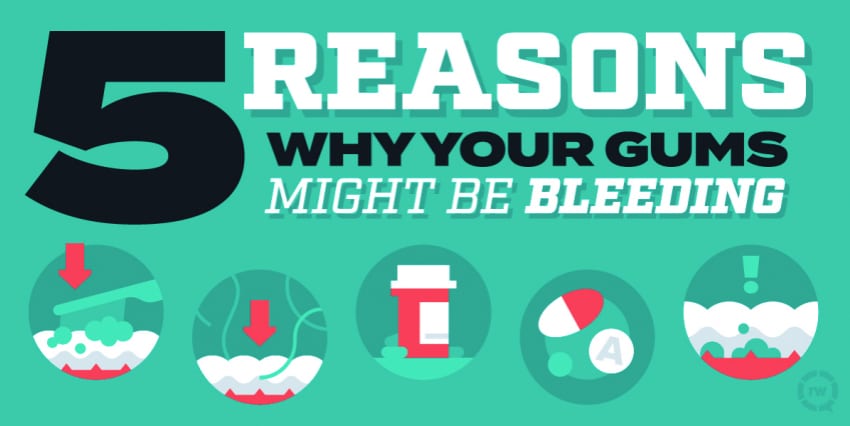Seeing some red in the sink after brushing or flossing may raise an eyebrow or two. It may seem like your gums are bleeding for no reason. But before you venture down the rabbit hole of what-ifs, consider these common causes of gum bleeding.
Common Causes of Bleeding Gums
Vigorous Toothbrushing
The extra oomph you’ve put into your brushing since your most recent visit may be the first place to look. Instead of brushing with the vigor you’d use while scrubbing a stack of plates after Thanksgiving, aim for gentle and patient: place the bristles along your gums at a 45-degree angle, and gently brush two to three teeth at a time. Also use a soft bristle toothbrush instead of a medium or hard one that can be more abrasive on teeth and gums.
Inadequate or Forceful Flossing
Changing your flossing routine can also cause your gums to bleed. If you’ve returned to regular flossing after a little hiatus or if you’re flossing more forcefully than usual, bleeding is common. Remember to floss daily and with ease. When flossing between teeth, make sure to wrap the floss around the neck of one tooth to floss it, then raise the floss up slightly over the gum tissue between the teeth and wrap around the neck of the adjacent tooth to floss that other tooth. Don’t transfer to the adjacent tooth by slicing through the gum between the teeth.
Medication
Some over-the-counter medications, including aspirin, as well as prescription drugs, like blood thinners, may lead to gum bleeding. Be sure to let us know which medications you’re taking and keep us in the loop if you and your healthcare provider change your medications.
Vitamin Deficiency
A deficiency in vitamins is a common factor in gum bleeding. Vitamin A helps form your teeth and protects your mouth’s membranes; vitamin C helps maintain the health of your teeth and gums; and vitamin K ensures your blood clots. If you’ve upped your hygiene game but still spot blood after brushing, try adding more vitamin-rich foods to your diet.
Gingivitis and Periodontitis
Plaque is a sticky film that forms on teeth when bacteria in the mouth mix with saliva and sugary or starchy foods. Tooth brushing and flossing get rid of plaque. If you don’t remove plaque, it hardens into tartar (calculus) which accumulates at the necks of your teeth near the gumline. Bacteria that live in the calculus release toxins that irritate the gums and calculus is a rough mechanical irritant all of which lead to gum inflammation. Gum bleeding, as well as swelling and tenderness, is a common symptom of gingivitis and periodontitis. Often due to poor oral hygiene, both gingivitis and the more-serious periodontitis do require treatment.
When It’s Time for a Visit
If you make changes to your oral health routine but the bleeding doesn’t improve within 7 to 10 days, it’s best to come in for a visit. Give us a call at 720-826-4402 or schedule your visit online at www.2thbarbydrb.com.

